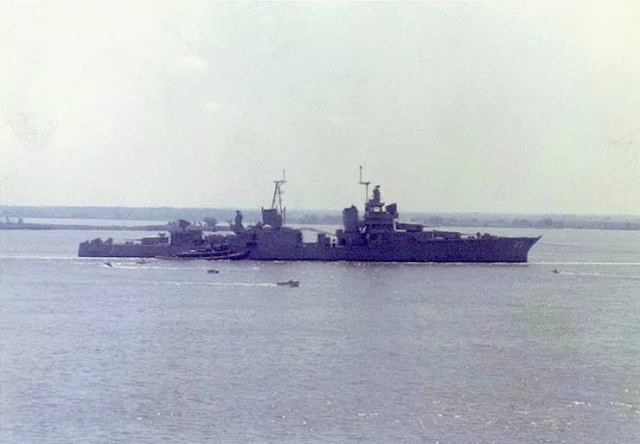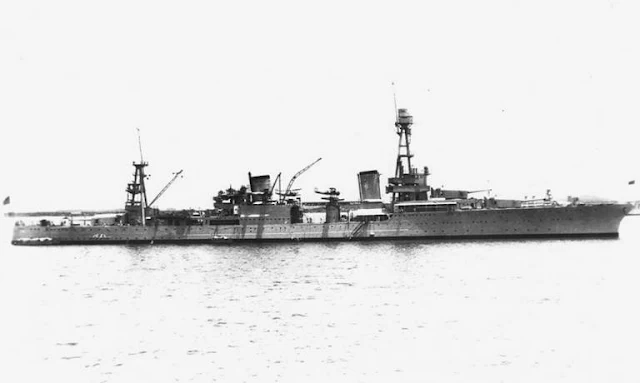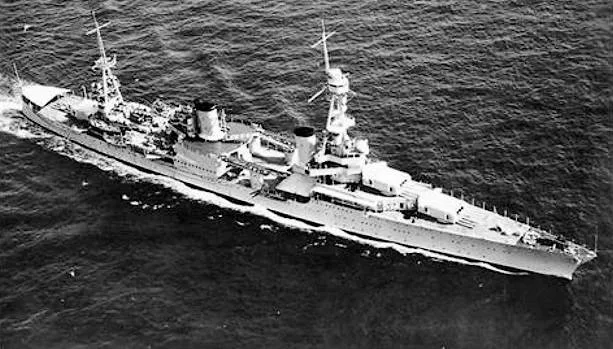 |
Yokosuka P1Y “Frances.”
|
The
Yokosuka P1Y Ginga ("Galaxy") is a twin-engine, land-based bomber
developed for the Japanese Imperial Navy in World War II. It was the
successor to the Mitsubishi G4M and given the Allied reporting name
"Frances".
The
P1Y was designed by the Yokosuka Naval Air Technical Arsenal to Navy
specification 15-Shi,[2] calling for a fast bomber with speed matching
the Zero, range matching the G4M, a 907 kg (2,000 lb) bombload, and the
ability to dive-bomb as well as carry torpedoes. As the result, the
construction suffered from excess complexity, difficulty of manufacture,
and poor serviceability. Problems with the availability of enough
reliable Nakajima Homare engines led to their replacement by the
Mitsubishi Kasei in the P1Y2-S night-fighter version.
The
streamlined design of the Ginga is attributed to Miki Tadanao, an
engineer who after World War II went on to create a similar aerodynamic
design for Japan's earliest bullet trains (Shinkansen), while working
with the Japan National Railways (JNR).
The
first flight was in August 1943. Nakajima manufactured 1,002 examples,
which were operated by five Kōkūtai (Air Groups), and acted as
land-based medium and torpedo bombers from airfields in China, Taiwan,
the Mariana Islands, the Philippines, the Ryukyu Islands, Shikoku, and
Kyūshū. During the last stages of the war the P1Y was used as a kamikaze
aircraft against the United States Navy during the Okinawa Campaign in
Operation Tan No. 2.
A night fighter version, the P1Y2-S Kyokko
("Aurora"), with Mitsubishi Kasei engines, was equipped with radar and
Schräge Musik-style upward-firing as well as forward-firing 20 mm
cannon. A total of 96 were produced by Kawanishi,[5] but due to
inadequate high-altitude performance against the B-29 Superfortress,
many were converted back to Ginga bombers.
Variants
P1Y1 Experimental Type 15 land-based bomber (15-Shi Rikujō Bakugekiki): 3
of prototypes and 9 of supplementary prototypes with 1,357 kW (1,820
hp) NK9C Nakajima NK9B Homare 11 engines. Prototype #3 was later used
for Ishikawajima Tsu-11 testbed.
P1Y1 Ginga ("Milky Way") Model 11 (Ginga 11-gata): First model of the series. Mounted Homare 11 or Homare 12.
P1Y1a Ginga Model 11A (Ginga 11 Kō-gata): Mounted Homare 12, and fitted 1 × 13 mm (.51 in) Type 2 machine gun in the back defensive position.
P1Y1b Provisional name Ginga Model 11B (Kashō Ginga 11 Otsu-gata): Converted from P1Y1a, mounted Homare 12, and fitted 2 × 13 mm (.51 in) Type 2 machine guns in the back defensive position.
P1Y1c Provisional name Ginga Model 11C (Kashō Ginga 11 Hei-gata): Converted
from P1Y1b, mounted Homare 12, and fitted 1 × 13 mm (.51 in) Type 2
machine gun in the forward position, prototype only.
P1Y1 Ginga Model 11 Night-fighter variant (Ginga 11-gata Kaizō yasen): Converted
from P1Y1. Armed with 2 × 20 mm Type 99 cannons. Equipped 302nd Kōkūtai
only. This is not a naval regulation equipment.
P1Y1-S Provisional name Ginga Model 21 (Kashō Ginga 21-gata): Night
fighter variant. Armed with 4 × 20 mm Type 99 cannons firing obliquely
forward, and 1 × 13 mm (.51 in) Type 2 machine gun in the back defensive
position. Only a project.
P1Y1 Ground attack variant: Converted
from P1Y1/P1Y1a, installed up to 20 × 20 mm Type 99 cannons in the bomb
bay for land strikes against B-29 bases in the Marianas. Approx. 30
rebuilt.
P1Y2-S Provisional name Ginga Model 26/Test production Kyokkō ("Aurora") (Kashō Ginga 26-gata/Shisei Kyokkō): Night
fighter variant. Initial named Hakkō ("Corona") in October 1943,
renamed Kyokkō in March 1944. Converted from P1Y1/P1Y1a. Fitted
Mitsubishi MK4T-A Kasei 25 engines. Armed with 2 × 20 mm Type 99 cannons
and 1 × 30 mm Type 5 cannon. Later, almost all were converted to P1Y2.
96 or 97 produced.
P1Y2 Provisional name Ginga Model 16 (Kashō Ginga 16-gata): Land based bomber. Converted from P1Y2-S. Mounted 1,380 kW (1,850 hp) Mitsubishi MK4T-A Kasei 25 Kō engines.
P1Y2a Provisional name Ginga Model 16A (Kashō Ginga 16 Kō-gata): Converted from P1Y1a. Mounted Mitsubishi MK4T-A Kasei 25 Kō engines.
P1Y2b Provisional name Ginga Model 16B (Kashō Ginga 16 Otsu-gata): Converted from P1Y1b. Mounted Mitsubishi MK4T-A Kasei 25 Kō engines.
P1Y2c Provisional name Ginga Model 16C (Kashō Ginga 16 Hei-gata): Converted from P1Y1c. Mounted Mitsubishi MK4T-A Kasei 25 Kō engines.
P1Y2 Ginga Model 16 Night-fighter variant (Ginga 16-gata Kaizō yasen): Converted
from P1Y2. Armed with 2 × 20 mm Type 99 machine guns or 1 × 30 mm Type 5
cannon. Equipped 302nd Kōkūtai only. This is not a naval regulation
equipment.
P1Y3 Provisional name Ginga Model 13 (Kashō Ginga 13-gata): Converted from P1Y1. Mounted Homare 21 engines.
P1Y4 Provisional name Ginga Model 12 (Kashō Ginga 12-gata): Converted from P1Y1. Mounted Homare 23 engines.
P1Y5 Provisional name Ginga Model 14 (Kashō Ginga 14-gata): Converted from P1Y1. Mounted Mitsubishi Ha-43 engines.
P1Y6 Provisional name Ginga Model 17 (Kashō Ginga 17-gata): Converted from P1Y2. Mounted Mitsubishi MK4T-C Kasei 25 Hei engines.
Provisional name Ginga Model 33 (Kashō Ginga 33-gata): Long-range bomber variant. Crew: 4, bombs= up to 3,000 kg. Only a project.
Test production Tenga (Shisei Tenga): Proposed jet-powered bomber variant, mounted Ishikawajima Ne-30. Discontinued in 1945.
MXY10 Yokosuka Navy Bomber Ginga: Ground decoy non-flying replica of Yokosuka P1Y1.
Imperial Japanese Navy Air Service Units Equipped with Yokosuka P1Y
- 302nd Kōkūtai: Equipped night fighter variant only.
- 521st Kōkūtai
- 522nd Kōkūtai
- 523rd Kōkūtai
- 524th Kōkūtai
- 701st Kōkūtai
- 706th Kōkūtai
- 752nd Kōkūtai
- 761st Kōkūtai
- 762nd Kōkūtai
- 763rd Kōkūtai
- 765th Kōkūtai
- 1001st Kōkūtai
- 1081st Kōkūtai
- Miyazaki Kōkūtai
- Toyohashi Kōkūtai
- Yokosuka Kōkūtai
- Kogeki 262nd Hikōtai
- Kogeki 401st Hikōtai
- Kogeki 405th Hikōtai
- Kogeki 406th Hikōtai
- Kogeki 501st Hikōtai
- Kogeki 708th Hikōtai
 |
Yokosuka P1Y “Frances.”
|
 |
Yokosuka P1Y “Frances.”
|
 |
| Yokosuka P1Y “Frances.” |
 |
| Variety of Japanese aircraft including Yokosuka P1Y ready for destruction after the war. |
 |
P1Y1c, since it has a single forward cannon, and no dorsal turret.
|
 |
| P1Y Ginga. |
 |
Yokosuka P1Y "Frances" shot down next to USS Ommaney Bay (CVE-79) by 0945 on December 15, 1944.
|
 |
| Imperial
Japanese Navy bomber P1Y1 15-Shi RIkujō Bakugekiki prototype #3,
Ishikawajima Tsu-11 testbed, unknown date, unknown location. |
 |
| P1Y1b, Yokosuka Kōkūtai Yo-206. |
 |
| April 7, 1945:
A Japanese Yokosuka P1Y1 "Frances" under fire from U.S. Navy ships'
antiaircraft batteries as it turns away with engines smoking after an
attack by Vought F4U Corsairs. Note the flak tracers. |
 |
July 15, 1944: A 3-view silhouette of the Yokosuka P1Y.
|
 |
| P1Y Kyokkou Aurora or Ginga Milky Way Frances P1Y. |
 |
| P1Y Kyokkou Aurora or Ginga Milky Way Frances P1Y. |
 |
| P1Y Kyokkou Aurora or Ginga Milky Way Frances P1Y. |
 |
| P1Y Kyokkou Aurora or Ginga Milky Way Frances P1Y. |







































































